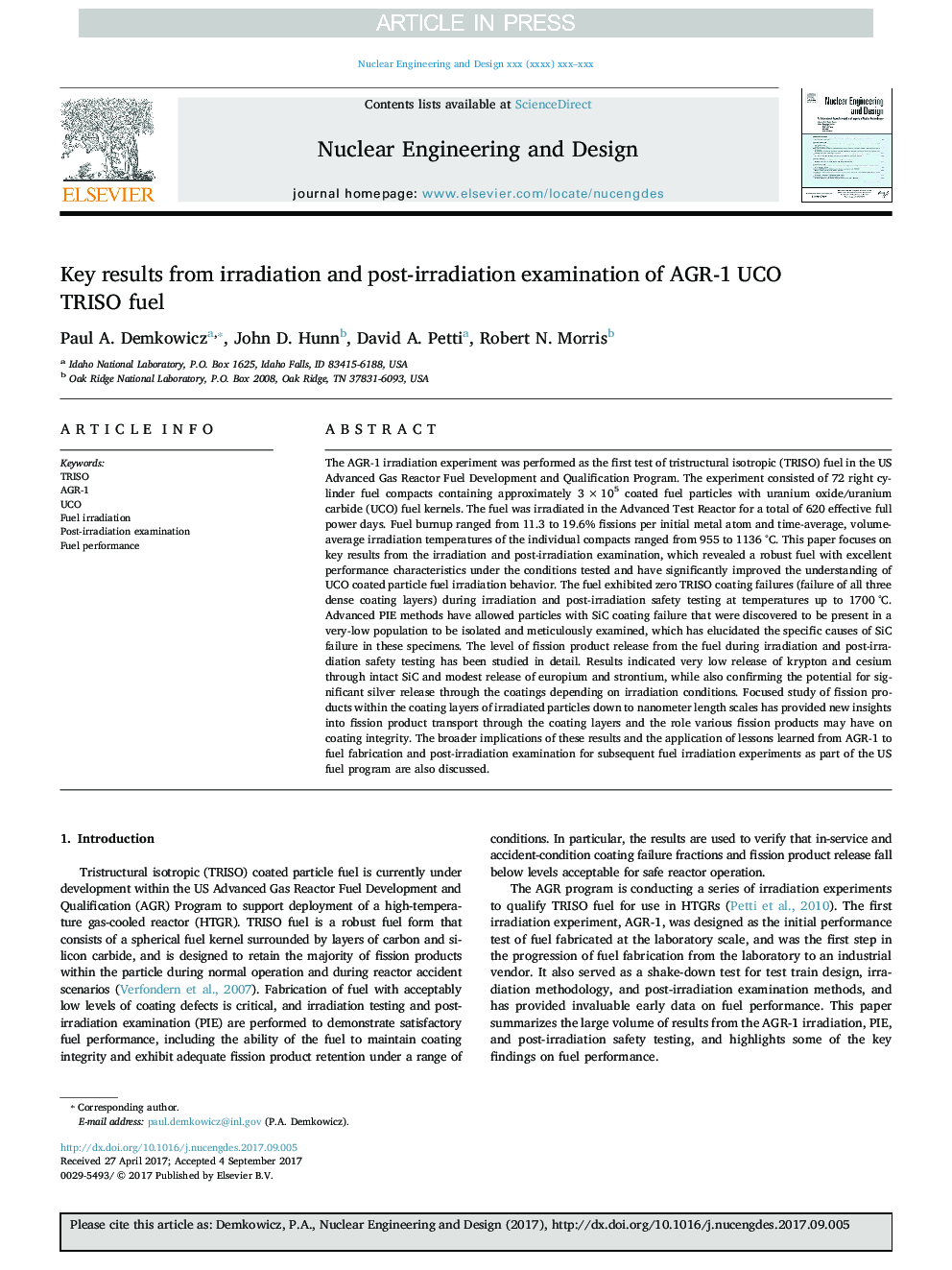| کد مقاله | کد نشریه | سال انتشار | مقاله انگلیسی | نسخه تمام متن |
|---|---|---|---|---|
| 6759308 | 1431392 | 2018 | 8 صفحه PDF | دانلود رایگان |
عنوان انگلیسی مقاله ISI
Key results from irradiation and post-irradiation examination of AGR-1 UCO TRISO fuel
دانلود مقاله + سفارش ترجمه
دانلود مقاله ISI انگلیسی
رایگان برای ایرانیان
موضوعات مرتبط
مهندسی و علوم پایه
مهندسی انرژی
مهندسی انرژی و فناوری های برق
پیش نمایش صفحه اول مقاله

چکیده انگلیسی
The AGR-1 irradiation experiment was performed as the first test of tristructural isotropic (TRISO) fuel in the US Advanced Gas Reactor Fuel Development and Qualification Program. The experiment consisted of 72 right cylinder fuel compacts containing approximately 3 Ã 105 coated fuel particles with uranium oxide/uranium carbide (UCO) fuel kernels. The fuel was irradiated in the Advanced Test Reactor for a total of 620 effective full power days. Fuel burnup ranged from 11.3 to 19.6% fissions per initial metal atom and time-average, volume-average irradiation temperatures of the individual compacts ranged from 955 to 1136 °C. This paper focuses on key results from the irradiation and post-irradiation examination, which revealed a robust fuel with excellent performance characteristics under the conditions tested and have significantly improved the understanding of UCO coated particle fuel irradiation behavior. The fuel exhibited zero TRISO coating failures (failure of all three dense coating layers) during irradiation and post-irradiation safety testing at temperatures up to 1700 °C. Advanced PIE methods have allowed particles with SiC coating failure that were discovered to be present in a very-low population to be isolated and meticulously examined, which has elucidated the specific causes of SiC failure in these specimens. The level of fission product release from the fuel during irradiation and post-irradiation safety testing has been studied in detail. Results indicated very low release of krypton and cesium through intact SiC and modest release of europium and strontium, while also confirming the potential for significant silver release through the coatings depending on irradiation conditions. Focused study of fission products within the coating layers of irradiated particles down to nanometer length scales has provided new insights into fission product transport through the coating layers and the role various fission products may have on coating integrity. The broader implications of these results and the application of lessons learned from AGR-1 to fuel fabrication and post-irradiation examination for subsequent fuel irradiation experiments as part of the US fuel program are also discussed.
ناشر
Database: Elsevier - ScienceDirect (ساینس دایرکت)
Journal: Nuclear Engineering and Design - Volume 329, 1 April 2018, Pages 102-109
Journal: Nuclear Engineering and Design - Volume 329, 1 April 2018, Pages 102-109
نویسندگان
Paul A. Demkowicz, John D. Hunn, David A. Petti, Robert N. Morris,